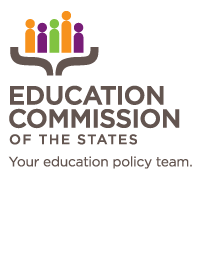As someone who works closely with people reentering society, and as someone who is looking ahead to his own approaching release from incarceration, I’ve seen firsthand the need to ensure that people heading home from incarceration have a real chance at successful reentry.
Too many Americans leaving incarceration are unable to successfully reintegrate due to barriers arising from current policies and practices. Policymakers and employers have the opportunity to support successful reentry by making changes and additions to education and workforce policies.
What Does the Data Say?
The Bureau of Justice Statistics estimates that of those released, around “68% ... were [rearrested] within three years, 79% within six years, and 83% within nine years.” This low rate of success is demoralizing for those returning and for their loved ones. I have been incarcerated for nearly 26 consecutive years at the same facility. During that time, I have seen countless men come and go. When I ask why they’ve returned, the most common reason they share is that they weren’t prepared or set up for success — especially when it came to securing sustainable employment after their release.
This is a far too common scenario for people being released. The Prison Policy Initiative found that formerly incarcerated people face an over 27% unemployment rate. This rate doesn’t reflect the high levels of underemployment or occupational segregation driven by licensure barriers and other collateral consequences. A report from the Brookings Institution and American Enterprise Institute demonstrates that having a job reduces recidivism, and that individuals are less likely to reoffend when they have stable, full-time employment.
The data also tells us that education is the greatest tool to improve post-release employment outcomes and reduce recidivism. A meta-analysis from the RAND Corporation shows that the average 70%-80% recidivism rate drops to 50% when a person finishes some high school while incarcerated, and that number plummets to 13.7% for an associate degree, 5.6% for a bachelor’s degree, and down to 0% for individuals who earn a master’s degree.
How Could Policy Changes Reduce Recidivism?
The July 2023 reinstatement of Pell Grants for incarcerated students removed one critical barrier and has the potential to seed more opportunities for incarcerated people to pursue postsecondary education as colleges and universities work to gain approval to offer Prison Education Programs. But the barriers to offering high-quality postsecondary education pathways in correctional settings remain daunting.
In 2023, Jobs for the Future’s Center for Justice & Economic Advancement released the Normalizing Opportunity Policy Framework, which outlines actionable steps for policymakers to create sustainable economic advancement for the 70 million people with records. As Lucretia Murphy, a vice president at JFF and director of the center, said, “Normalizing opportunity means that all people — despite their involvement in the carceral and legal systems — have access to an array of opportunities and support structures that drive upward mobility just like any other American.”
One important step toward normalization is to ensure that people who are incarcerated have access to the tools and technology they need to pursue education and training and catalyze employment opportunities.
It was possible for me to pursue graduate study and to launch a career with JFF while still incarcerated because of recent investment in technology. Investing in technology can drastically increase access to high-quality online learning opportunities from colleges and career and technical education providers.
Technology can also open doors to sustainable employment — particularly in the age of remote work. To support access to remote internships, fellowships and quality work opportunities, policymakers could identify and remove policy barriers that prevent individuals who are currently incarcerated from accessing these opportunities.
Given that employers are equally critical stakeholders in normalizing these opportunities, policy change can also be a productive avenue for incentivizing employers to extend opportunities to those who are currently incarcerated.
JFF’s framework identified four key areas policymakers can use to address barriers to economic advancement:
- Education, skills training and career navigation.
- Employment and wealth building.
- Mobility supports: foundational supports that help people sustain employment and advance economically.
- Essential infrastructure: attention to the systems that help people overcome barriers and navigate reentry.
Normalizing opportunity and upward mobility for people with records won’t be easy. As the U.S. prison system, a massive, publicly funded industry, continues to operate with the same outdated policies and practices, individuals are negatively impacted by the lack of preparation for economic stability and a successful return to their communities.
But hope can be found in the pockets of incredible work to modernize outdated policies and provide more opportunities for success, creating a more rehabilitative and fair criminal legal system. Policy solutions are a critical component of the effort to address the system that fails to enable successful reintegration and to make opportunities for people with records the norm rather than the exception.




